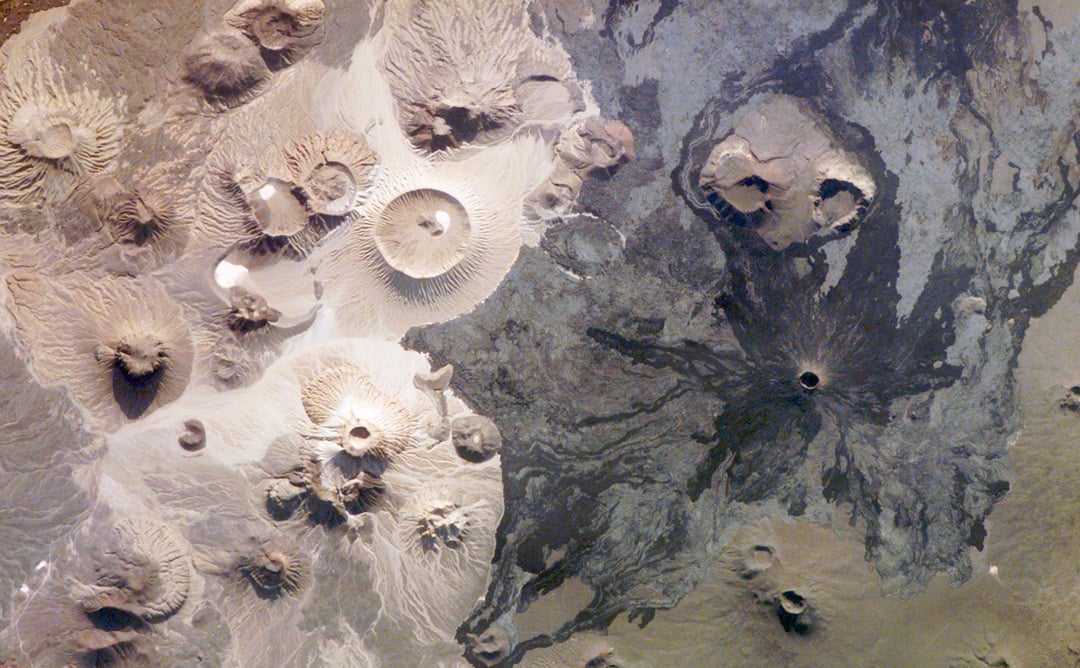Anyone care to guess what orbiting spacecraft is responsible for taking this image, or even what world this is a picture of? At first glance, with all those craters, it could be Mars. However, the coloring isn't quite right for the Red Planet. Is it a photograph of Mercury or an image of the moon?
OK, yes, this is an image of Earth, but you were wondering there for awhile, weren't you! Interestingly enough, the white area is not snow, and the craters are not impact craters, but volcanic. And what spacecraft gets credit for the image? The International Space Station. This is one of the most recent images taken by the astronauts on board the ISS as part of the Earth Observatory program. A wonderful website,
NASA's Gateway to Astronaut Photography of Earth
, hosts an incredible collection of photographs that astronauts have taken of our home planet.
Beginning with the Mercury missions in the early 1960s, astronauts have taken photographs of the Earth. As of April 7, 2008, this website has 759,527 views of the Earth, which includes 315,923 from the ISS. The site processes images coming down from the International Space Station on a daily basis, so the database is continually growing. The U.S. Destiny Laboratory module has a science window with high optical quality, which usually faces the Earth, and most of the ISS's images are taken from that window on the world. On board the ISS is a nice selection of professional digital cameras, and a variety of lenses. One could spend hours (or days or a lifetime!) browsing through the striking photographs of Earth the astronauts have taken. The website also includes lots of information about each of the images, and a fun
Where In the World quiz
to test your geographical knowledge.
The image above is of the
Harrat Khaybar volcanic field
, a 14,000-square-kilometer area located in the western Arabian peninsula. The volcanic field was formed by eruptions along a 100-kilometer, north-south vent system over the past 5 million years. The most recent recorded eruption took place between 600-700 AD.
Harrat Khaybar contains a wide range of volcanic rock types and spectacular landforms, several of which are represented in this astronaut photograph. There are dark, fluid basalt lava flows, and the white deposits are sand and silt that accumulate in the depressions. There are lava domes and cones from the past volcanic activity.
The ISS astronauts take images daily of our planet. The image of Harrat Khaybar was taken on March 31, 2008, with a Kodak 760C digital camera fitted with a 400 mm lens, and is provided as part of the the ISS Crew Earth Observations experiment.
Original News Source:
Earth Observatory website
 Universe Today
Universe Today
